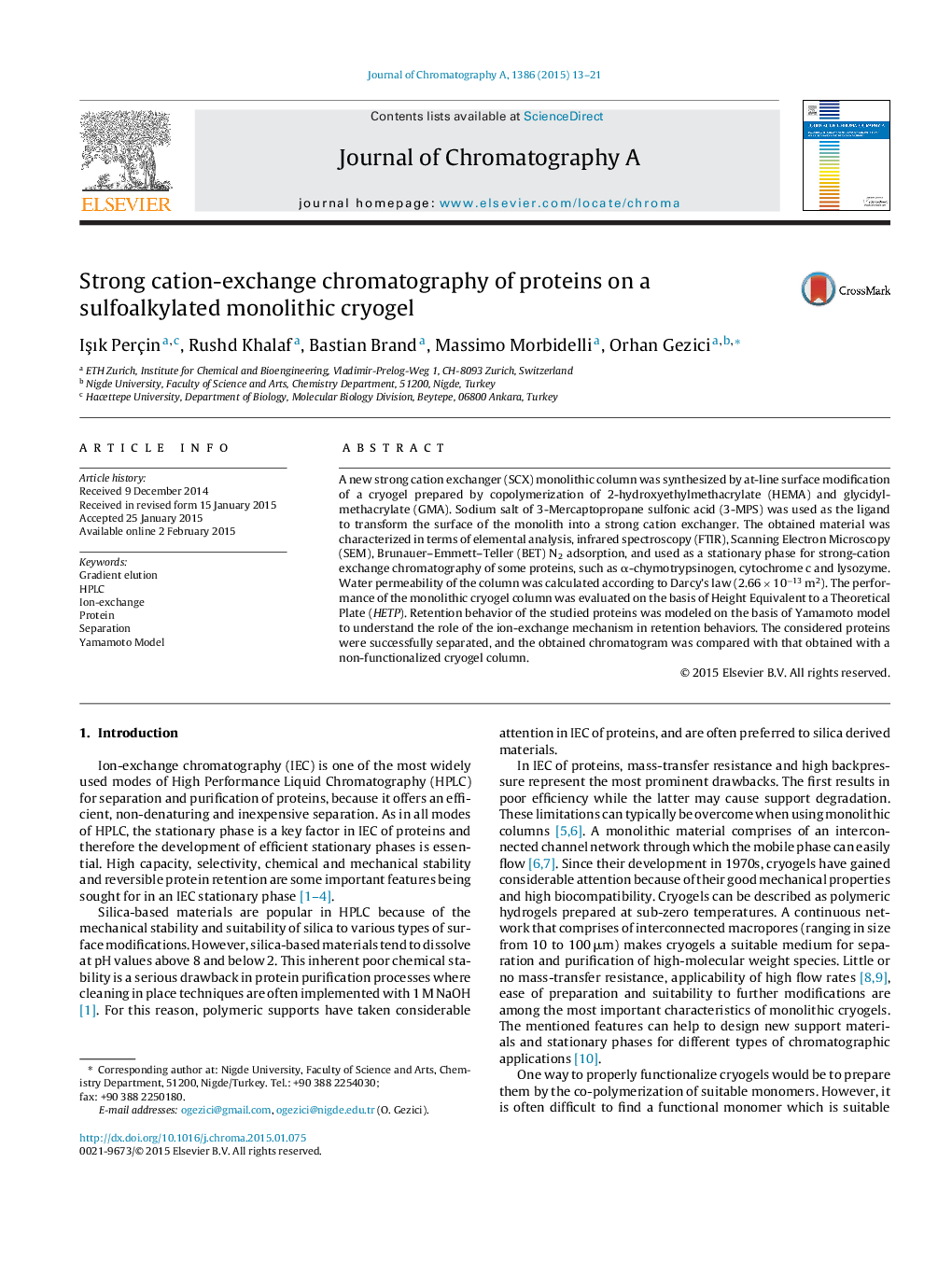| Article ID | Journal | Published Year | Pages | File Type |
|---|---|---|---|---|
| 1202033 | Journal of Chromatography A | 2015 | 9 Pages |
•A poly(HEMA-co-GMA) cryogel was turned into a strong-cation exchanger form through a sulfoalkylation process.•Strong-cation exchange chromatography of some proteins was performed on the obtained material.•The role of ion-exchange was evaluated by the Yamamoto model using the data obtained from gradient elution.•The studied proteins were successfully separated on the new surface-modified monolithic cryogel.•Equilibrium binding capacity was found to be 8 mg/mL for Lysozym.
A new strong cation exchanger (SCX) monolithic column was synthesized by at-line surface modification of a cryogel prepared by copolymerization of 2-hydroxyethylmethacrylate (HEMA) and glycidylmethacrylate (GMA). Sodium salt of 3-Mercaptopropane sulfonic acid (3-MPS) was used as the ligand to transform the surface of the monolith into a strong cation exchanger. The obtained material was characterized in terms of elemental analysis, infrared spectroscopy (FTIR), Scanning Electron Microscopy (SEM), Brunauer–Emmett–Teller (BET) N2 adsorption, and used as a stationary phase for strong-cation exchange chromatography of some proteins, such as α-chymotrypsinogen, cytochrome c and lysozyme. Water permeability of the column was calculated according to Darcy's law (2.66 × 10−13 m2). The performance of the monolithic cryogel column was evaluated on the basis of Height Equivalent to a Theoretical Plate (HETP). Retention behavior of the studied proteins was modeled on the basis of Yamamoto model to understand the role of the ion-exchange mechanism in retention behaviors. The considered proteins were successfully separated, and the obtained chromatogram was compared with that obtained with a non-functionalized cryogel column.
